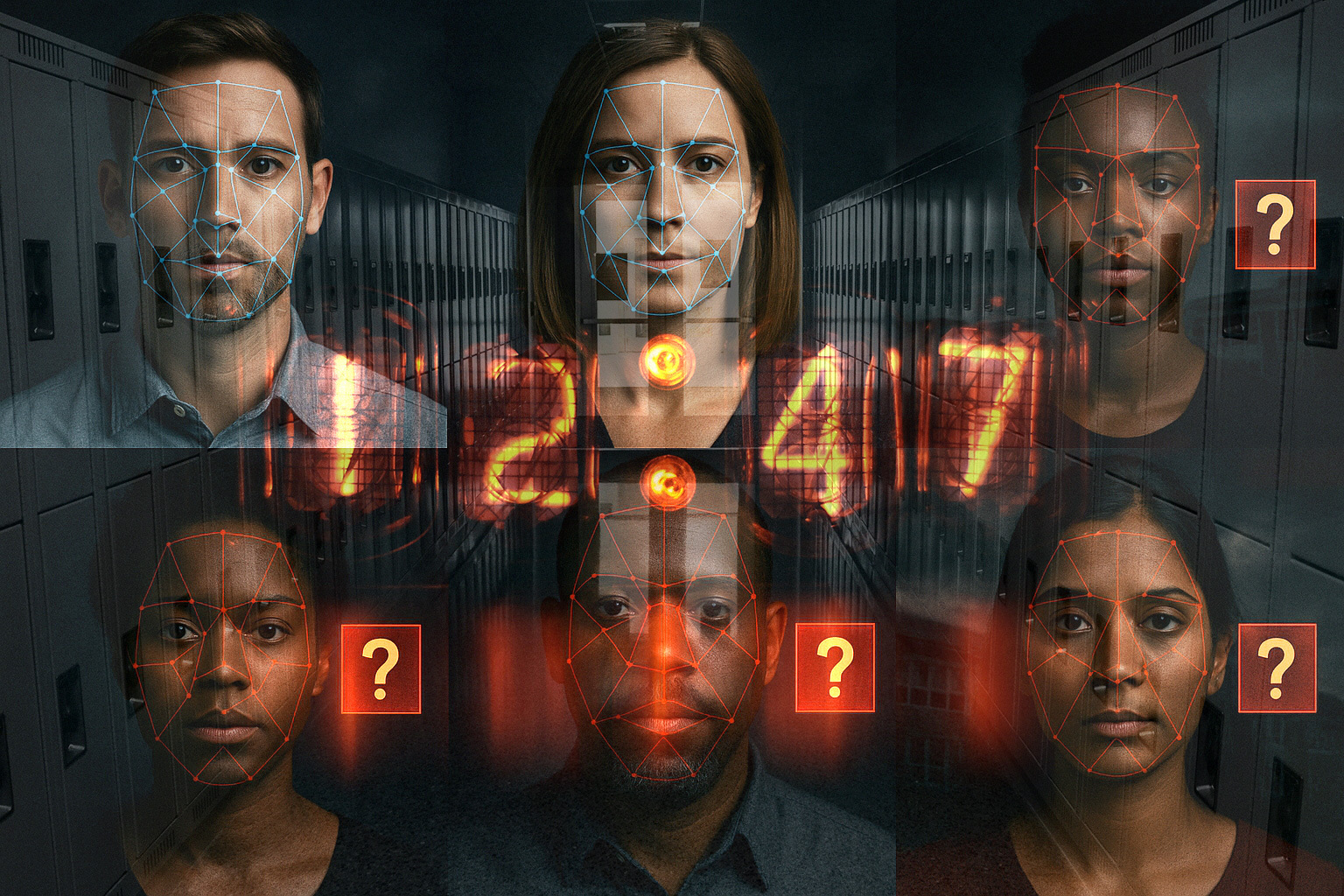Why School Districts Are Moving Away from Facial Recognition for Time Tracking
Rethinking Facial Recognition for K-12 Time Tracking
Across the country, school districts are re-evaluating how they track hourly staff time. Preventing buddy punching and improving accuracy are still top priorities—but so are equity, compliance, and trust.
Facial recognition once seemed like the future of time tracking. But new research and state laws have exposed major risks for K-12 employers. The next evolution is facial documentation—a camera-based solution that verifies who clocked in without relying on facial recognition algorithms.
The Equity Problem with Facial Recognition
Facial recognition systems use AI to identify employees by comparing facial geometry against stored templates. In controlled environments, they can seem impressive. In schools, they can be deeply problematic.
Independent studies from MIT Media Lab and the National Institute of Standards and Technology (NIST) found major demographic accuracy gaps. Error rates for darker-skinned women reached over 30%, compared to less than 1% for light-skinned men.
These disparities aren’t just theoretical. They translate into missed punches, delayed pay, and disproportionate frustration among certain groups of employees. The Harvard Journal of Law and Technology has documented how such bias remains persistent across commercial systems, even as vendors claim progress.
In a school setting, where fairness and inclusion are foundational, this creates an obvious challenge. A system that fails more often for women or people of color undermines trust in payroll accuracy and district leadership.
The Legal Landscape Is Shifting Fast
Equity isn’t the only concern. Facial recognition also introduces escalating legal and compliance risk for public institutions.
Cities including San Francisco, Boston, Portland, and Berkeley have banned government use of facial recognition outright. A map from Fight for the Future tracks how these restrictions continue to spread across the U.S.
In 2023, the New York State Education Department prohibited K-12 schools from using facial recognition after determining the privacy risks outweighed any operational benefit. Other states—including Illinois and Texas—enforce biometric privacy laws that regulate how “face geometry” data is collected, stored, and deleted.
Violating these laws can trigger fines, lawsuits, and public backlash—especially when the technology in question affects employees’ pay or privacy.
For district leaders, the safest strategy is to choose solutions that achieve accountability goals without crossing biometric or consent boundaries.
Why Facial Documentation Is the Smarter Alternative
Facial documentation, used in Touchpoint PunchBuddy, looks similar on the surface but works very differently. Instead of identifying employees through AI, the system verifies them through existing credentials such as door access badges.
When an employee clocks in, the system takes a still photo for recordkeeping and stores it securely in a separate, encrypted database. That image is used only for audit purposes—it’s never analyzed or compared using algorithms.
Benefits of facial documentation for school districts:
- Prevents buddy punching without AI identification or bias.
- Avoids state and local bans on biometric facial recognition.
- Reduces missed punches and payroll corrections comparably to biometrics.
- Uses existing credentials, lowering total cost of ownership.
- Supports a culture of transparency, privacy, and trust.
This model preserves accountability while steering clear of legal and ethical pitfalls.
Building Equity and Confidence in Time Tracking
Technology in schools must enhance trust, not erode it. When employees fear being misidentified or rejected by a time clock, morale suffers. Facial documentation protects both accuracy and dignity—it ensures every staff member, regardless of race, gender, or lighting conditions, is treated the same.
Districts adopting this approach report smoother rollouts, fewer payroll exceptions, and improved staff confidence in time reporting systems.
Interested in learning more?
Touchpoint’s new white paper, Safer Clocks for K‑12: Why Facial Documentation Beats Facial Recognition for Employee Time Tracking, provides a deep dive into the research, legislation, and data behind this shift.
Discover how your district can protect equity, privacy, and accuracy in time tracking:

Rand Habegger
Rand Habegger is a seasoned veteran of EdTech, with nearly two decades' experience helping unsung underdogs in school district offices identify solutions to unique K-12 problems. When he's not helping educators discover breakthroughs, you might find him snowboarding with his kids, performing in a local music theater production (also with his kids), or thoughtfully sipping a vanilla cream soda he hasn't ranked yet.

